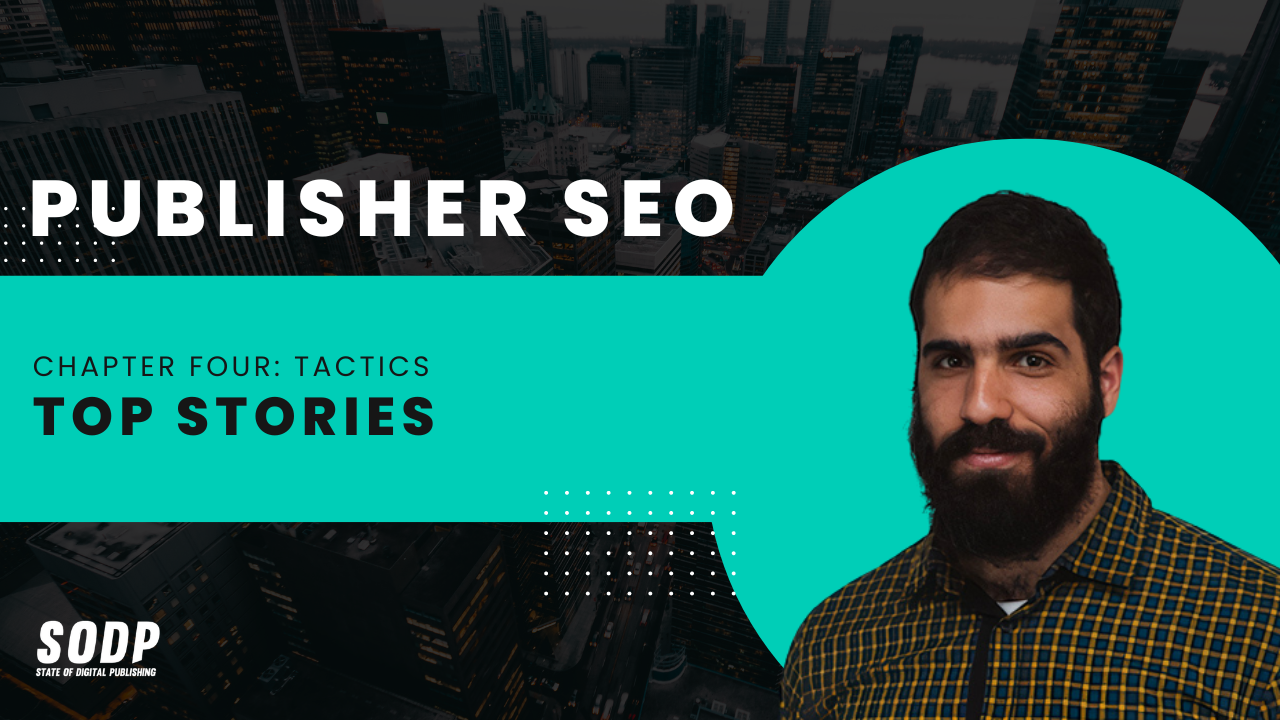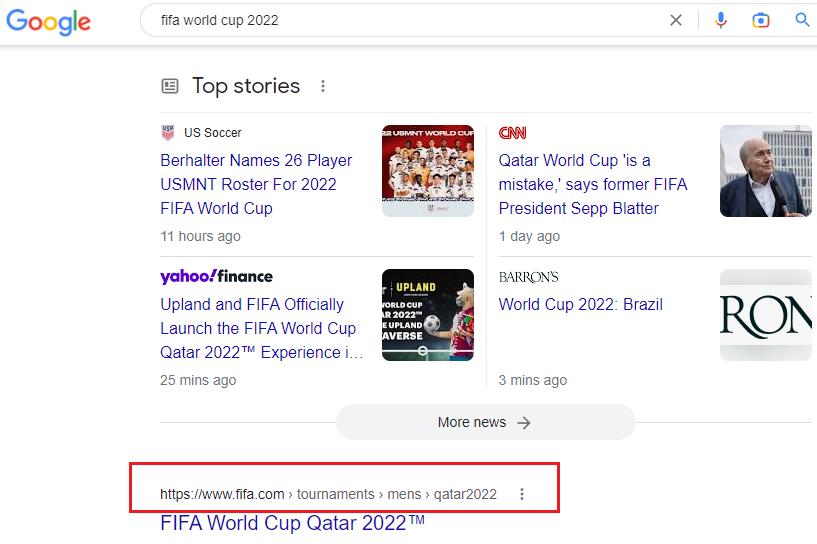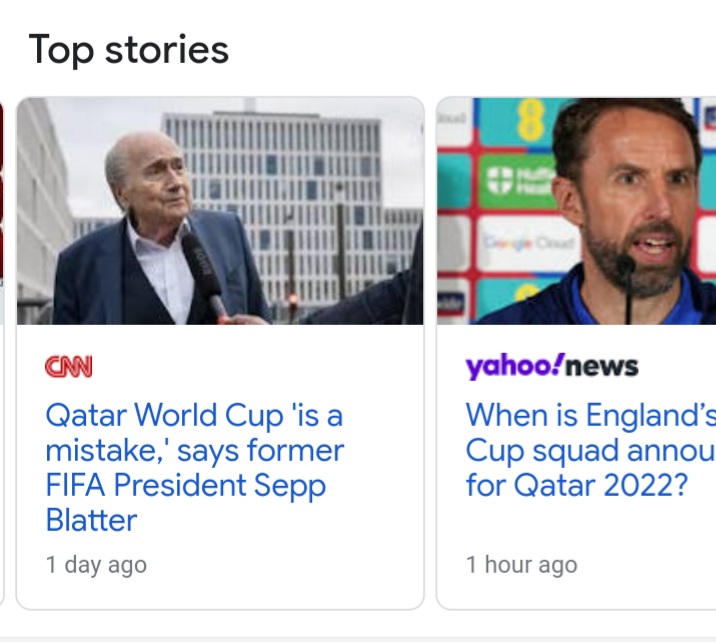4.3.1 What Are Top Stories
Top Stories is a section within the universal search results page that displays the trending news stories related to that topic. Google also displays a Top Stories section at the top of search queries that it feels are news-oriented.
For instance, typing the query “FIFA World Cup 2022” into Google Search on desktop brings up a Top Stories panel that ranks above the official FIFA website.
Google anticipates that users searching for this particular query might be more interested in reading about the latest news updates than in viewing FIFA’s site. In other words, Google considers the sites it shows in the Top Stories panel to be the best and latest sources of information for this topic.
When viewing these results on a mobile device, they appear in the form of individual news panes that occupy most of the screen, and which need to be swiped horizontally to move from one to the next. This is why on mobile it’s called the Top Stories carousel.
It’s important to reiterate that Google displays Top Stories only for queries that it deems need news-related results. Googling a recipe or how to guide will almost never bring up a Top Story panel or carousel.
4.3.2 Why Are Top Stories Important?
Content that features in Top Stories receives prime visibility on Google, resulting in increased traffic.
Top Stories appear at several places on Google when users search for news.
The search engine results pages (SERPs) is one place. When entering the keyword “soccer”, the Top Stories section appears ahead of both search ads and organic results. Even though these are news stories, they show up under the “All” tab.
Upgrade to a premium plan to access the content.
Upfront
(1 payment)
-
7 chapters
-
53 modules
-
20+ hours of educational videos
-
Monthly 1-on-1 coaching
-
Ready-to-use templates
4 Quarterly Payments Of
-
7 chapters
-
53 modules
-
20+ hours of educational videos
-
Monthly 1-on-1 coaching
-
Ready-to-use templates
Course Only
(1 Payment)
-
7 chapters
-
53 modules
-
20+ hours of educational videos
-
Monthly 1-on-1 coaching
-
Ready-to-use templates





